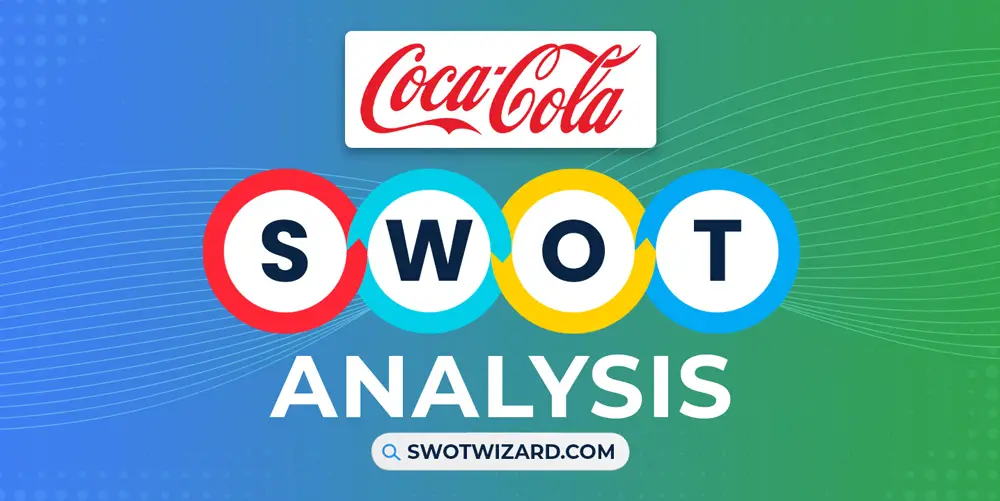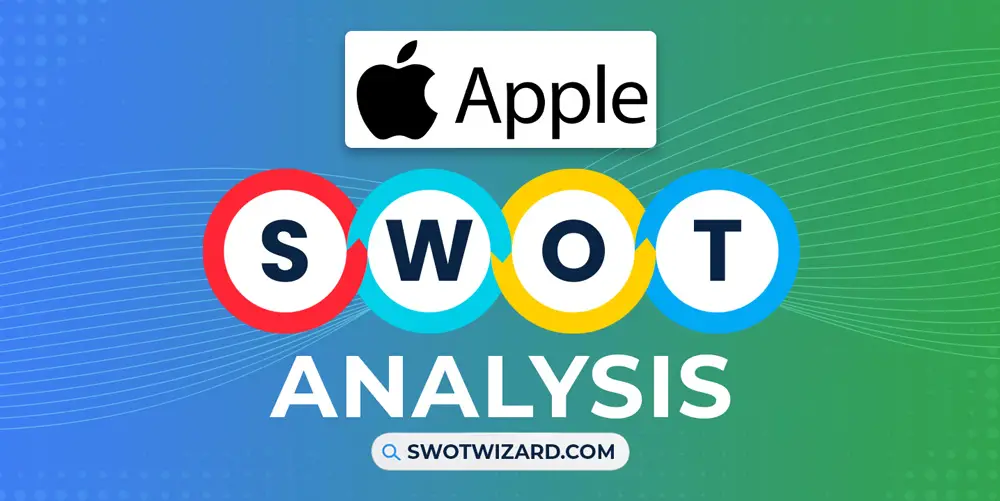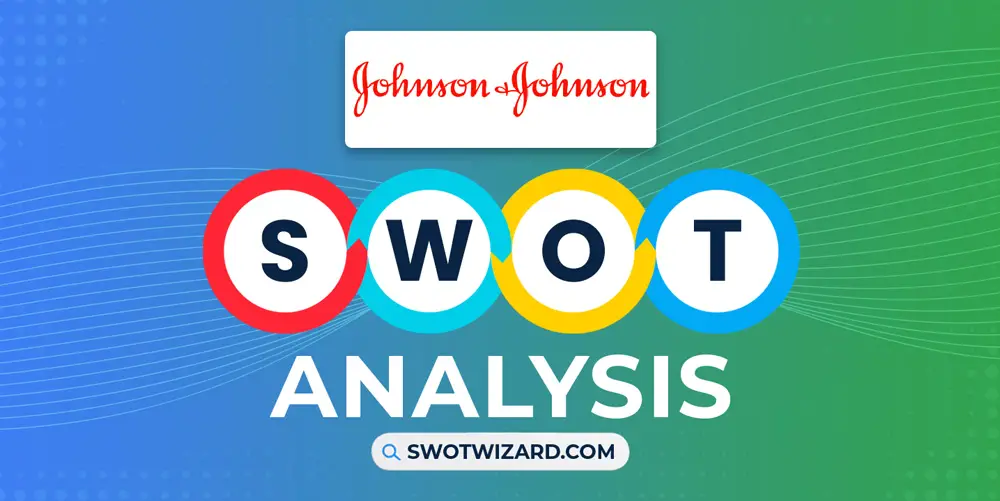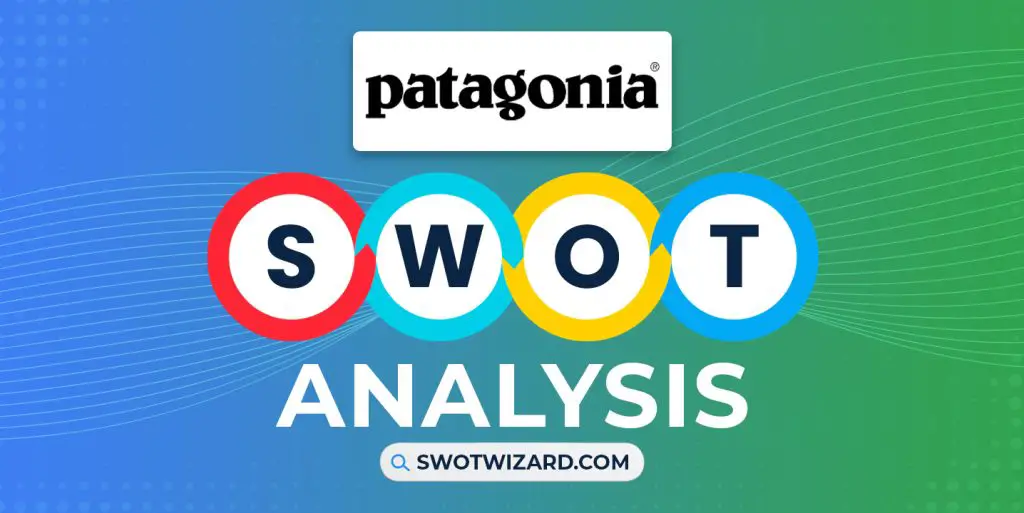Coca-Cola is the world’s 32nd largest brand and largest soda brand by revenue. It’s also one of the oldest soda brands to exist and has reached its position by enduring the test of time. Let’s do the Coca Cola SWOT analysis to understand how an unshifting monolith reigns in a constantly shifting market.
Coca-Cola: Company Overview
| Company | The Coca-Cola Company |
| Industry | Beverage |
| Founded | 29 January, 1892 |
| Founder | John Stith Pemberton, Asa Griggs Candler |
| Chairman & CEO | James Quincey |
| Headquarter | Atlanta, Georgia, U.S. |
| No. of Employees | 86,200+ |
| Annual Revenue | $38.7 billion (FY 2021) |
| Website | coca-colacompany.com |
On May 8, 1886, Dr. John Stith Pemberton began producing and selling Coca-Cola. In its first year, it sold 9 glasses at a 5-cent per glass rate. The Coca-Cola Company came into being in 1892, selling 370,877 gallons of concentrated syrup by 1990. Now, the company sells over 2,800 products in more than 200 countries. Its headquarters is in Atlanta, and it employed 79,000 people in 2020. In 2022, it had a market cap of $261.84 billion and generated $42.34 billion globally.
Product & Services of Coca Cola
Coca-Cola | Coke Zero | Diet Coke | Fanta | Ciel | Dasani | Sprite | Del Valle | Fair life | Georgia | Gold Peak Tea | Honest Tea | Mello Yello | Minute Maid | Odwalla | Powerade
Coca Cola Competitors
Red Bull | Tetra Pak | PepsiCo | Keurig Dr Pepper | Soylent | Nestle | Nongfu Spring
Did You Know?
Coca-Cola’s first ever formula contained 1/400 of a grain of cocaine per ounce of concentrate. It stopped using cocaine in its production fully by 1929.
Strengths – Coca Cola SWOT Analysis
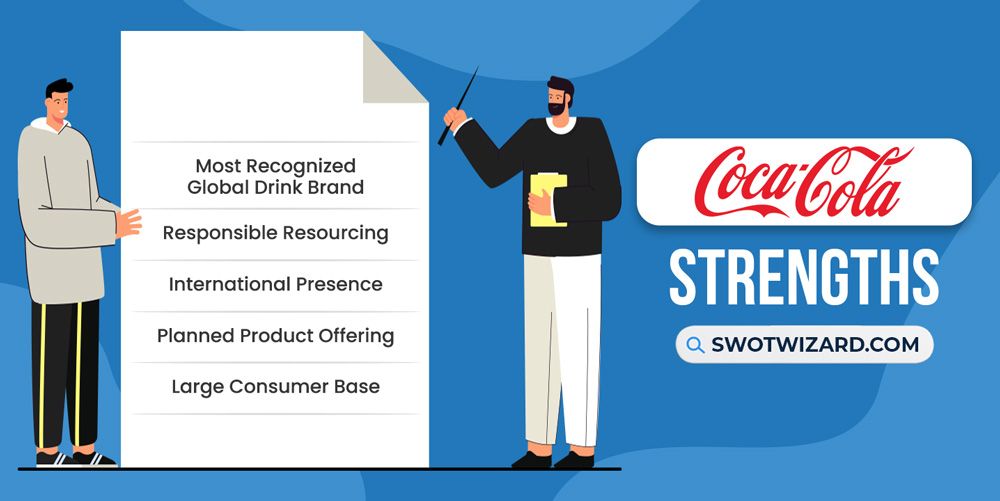
Most Recognized Global Drink Brand: Coca-Cola is one of the world’s oldest and longest-running soft drinks brands and is more recognized than any of its competitors. In 2022, Coca-Cola’s brand value was set at $97.88 billion while its chief contender PepsiCo, Inc. was valued at only $13.7 billion. Thanks to a nearly unaltered logo design since 1905, Coca-Cola is recognized by over 94% of the global population.
Responsible Resourcing: Coca-Cola takes great pains to ensure that its operations do not impact the environment adversely. For example, Coca-Cola has invested over $1 billion worldwide to outfit nearly every one of its 804 system facilities with wastewater treatment plants. These plants return 173 billion liters of clean water to the municipalities and other sources. Coca-Cola is not required to do this, which makes its image more impactful to customers worldwide.
International Presence: Coca-Cola is available for purchase in over 200 countries. It’s quite difficult to find a market, even in the most remote corners of the world where Coca-Cola is not sold. The brand achieves this by decentralizing the process and segmenting the product. In populated areas in Africa, and other Asian countries the MDC model is used, while independent SMEs and individuals supply it in remote areas.
Planned Product Offering: Coca-Cola sells over 200 brands worldwide. Every brand is carefully planned to offer products that don’t compete with each other and cater to consumer preferences and market trends. For example, Coca-Cola sells Ayataka Tea and Aquarius Sports for the health-concerned Japanese markets, but it sells Del Valle in Mexican markets that have a preference for fruity sodas. The company conducts thorough market research to find exactly what sells and creates local brands for those products.
Large Consumer Base: Around 1.9 billion servings of Coca-Cola’s beverages and other offerings are enjoyed worldwide every day. This equates to the average consumer drinking a Coca-Cola product at least once every 4 days. More than 3% of the beverages consumed are Coca-Cola, the company’s iconic drink. Due to its immense popularity, Coca-Cola owns 15 of the only 33 non-alcoholic brands that generate over $1 billion in revenue annually.
Weaknesses – Coca Cola SWOT Analysis
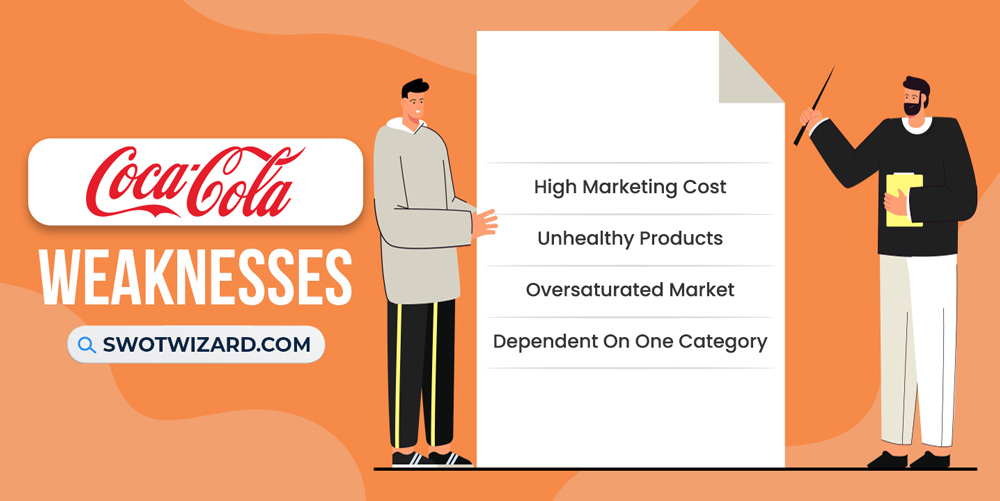
High Marketing Cost: Coca-Cola’s global presence comes at a high marketing cost. Coca-Cola spent $4.1 billion in advertising expenses in 2021, and $4.25 billion in 2019. Not only is this higher than all of its competitors, but it’s also higher than Microsoft and Apple’s marketing costs combined. PepsiCo, Inc. has spent around $3.5 to $3 billion annually on marketing since 2019, but the company also sells other food brands including chips.
Unhealthy Products: Although Coca-Cola is loved worldwide, its beverages are mostly sugary, chemical-infused drinks that have immediate harmful impacts on your body. Within an hour, 300 ml of Coca-Cola will exceed your sugar intake, cause fat buildup, overstimulate your pleasure sensors, and force you to urinate valuable minerals out of your system. A study in 2015 reported 184,000 people died worldwide per year due to consuming sugary drinks. By selling a product that mimics the effects of heroin on your body, Coca-Cola does itself no favor in the public eye.
Oversaturated Market: In 2023, there are 383 soda production companies in the US, and the market for carbonated drinks is forecasted to generate $149.60 billion. In total, there are over 3,738 companies that compete in the US non-alcoholic beverage market. These companies generated $447 million in revenue in 2021, and the number of companies and their market share will only increase. Coca-Cola has to compete in this oversaturated market and others worldwide, spending more per customer each quarter.
Dependent On One Category: Coca-Cola as a whole is dependent on the beverage market, and hasn’t expanded into any other product category. The company has announced its entry into the non-alcoholic mixer space with 3 offerings from its Simply brand. But these hit the market on January 23, 2023, which is years after PepsiCo, Inc.’s June 21, 2021 entry. PepsiCo, Inc. also sells other food products, which Coca-Cola does not.
Opportunities – Coca Cola SWOT Analysis
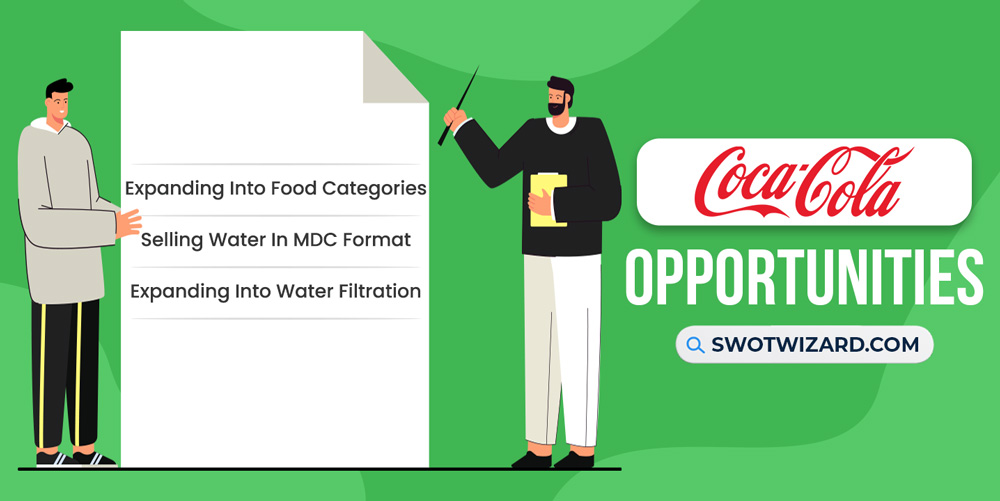
Expanding Into Food Categories: Like its competitor, PepsiCo, Inc. Coca-Cola can launch food product brands to expand its business. The company already has access to water filtration systems across nearly all of its facilities, and it’s a crucial component for selling potato-based goods. It can also contract SMEs in the food industry to supply water to them.
Selling Water In MDC Format: Coca-Cola can contract restaurants and other hospitality businesses to sell water in a semi-MDC style. These businesses would have their container that Coca-Cola would refill in an agreed schedule. The company can also sell its water as a ghost label or private label in luxury hotels.
Expanding Into Water Filtration: Coca-Cola Foundation has already managed to create alternative water supply methods in the Philippines. Although this was an act of responsible charity, the company can lend its expertise and equipment to cities and nations that suffer from the water crisis. Chad, Columbia, Ethiopia, and many other countries don’t have access to clean water. Coca-Cola can advise these countries and install water filtration systems by contract.
Threats – Coca Cola SWOT Analysis
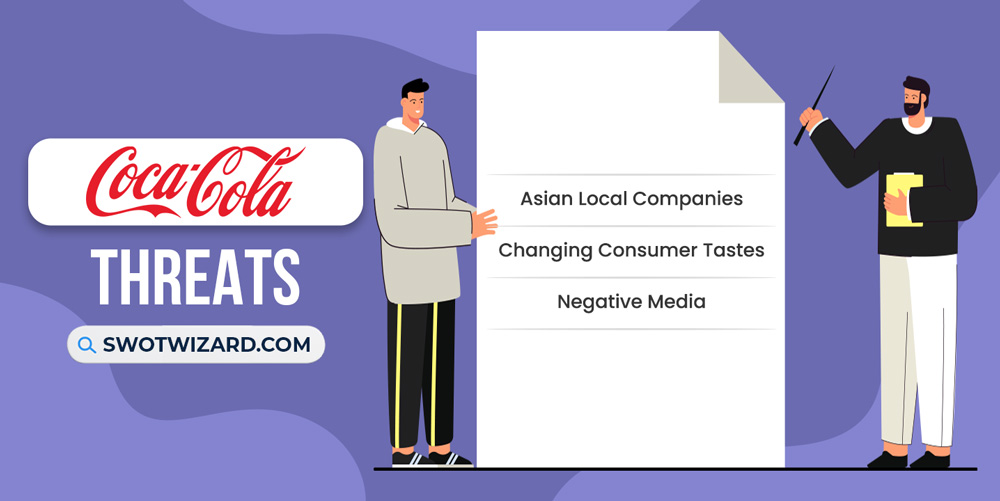
Asian Local Companies: 12.8% of Coca-Cola’s revenue in 2020 came from the Asia-Pacific markets. Local Asian competitors are responsible for such a low percentage, as new drink brands keep popping up in these markets nearly every month. Most new brands offer cheaper prices or better value deals and exploit the local market trends quite effectively. Just through sheer numbers, these brands can undercut Coca-Cola and remove it from Asia-Pacific markets.
Changing Consumer Tastes: As healthy lifestyles become more and more popular, consumers are shifting their preferences from sugary drinks to healthier options. Kombucha, Kefir, coconut water, green shakes, and green tea brands are gaining more consumers by the day. Coca-Cola has brands that offer healthier drinks, but all are local brands and cannot generate enough money to replace Coca-Cola’s revenue. At this rate, the company can lose its sugary drink consumer base.
Negative Media: Along with the negative press for its product category, Coca-Cola has been frequently accused of using unhealthy ingredients. On December 28, 2022, a class action lawsuit was filed accusing the company’s Simply brand of containing bisphenol A and carcinogenic PFAs in its drinks. A 2017 lawsuit also accused the company of secretly funding and promoting biased research and running misleading advertisements. Grave claims of toxin used in production and falsifying data in adverts can be legally incriminating enough for a government-enforced shutdown.
[Bonus Infographic] SWOT Analysis of Coca Cola
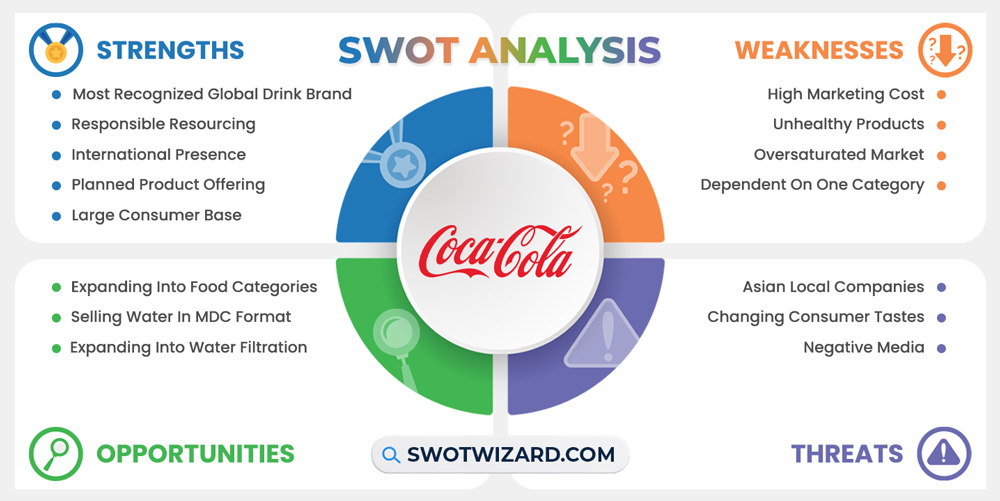
Recommendations for Coca Cola
Coca-Cola was opportune enough to start its business in a market with relatively low competition. But its days of lounging on outdated business strategies are swiftly coming to an end. If the company wants to survive in an oversaturated market, then it has to consider these changes soon.
- Coca-Cola has to expand into food markets other than the beverage category. It should try launching chips, baked goods, and packaging brands so it can exploit its already existing supply chain.
- Coca-Cola can launch ghost labels to artificially oversaturate a target market and take down emerging local competitors.
- The company can acquire failing beverage companies’ infrastructures and use them for its production.
- The company should slowly switch over to producing healthier brands and increase Coke Zero productions to match market trends.
- The company can consider full automation and lower its labor cost.
Frequently Asked Questions (FAQs)
What’s Coca-Cola’s Slogan?
Since 2020, the slogan is “Be open like never before.”
How much sugar is in Coca-Cola?
Coca-Cola has 10.6 g of sugar per 100 ml in its Original flavor.
Final Words on Coca Cola SWOT Analysis
Coca-Cola is a brand that runs on history, familiarity, and consistency. But that has made its response to external change poor and evolution stagnant. To thrive in a market full of health-concerned consumers, the company has to abandon its roots and rebuild on current trends.
References
- Wikipedia contributors. (n.d.). The Coca-Cola Company. Wikipedia.
- Berry, S. (2010, December 19). How Coca-Cola’s distribution system works. ColaLife.
- Bondarenko, V. (n.d.). Popular Coca-Cola Brand May Have Toxic Chemicals. MSN.
- Water Stewardship – Coca-Cola Foundation PH. (n.d.). Coca-Cola Foundation PH.
- Coca-Cola (KO) – Market capitalization. (n.d.). CompaniesMarketCap.
- How Many People Consume Coca-Cola® Products? (n.d.). Delighted Cooking.
- Faria, J. (2023, January 6). Coca-Cola’s brand value from 2006 to 2022. Statista.
- Felman, A. (2019, November 6). Is Coca-Cola bad for you? Medical News Today.
- Harfmann, B. (2018, February 8). Consumers opt for healthy, functional beverages. Beverage Industry.
- Krans, B. (2022, April 7). Lawsuit: Coca-Cola Uses False Advertising to Sell Unhealthy Drinks. Healthline.
- Soda Production in the US – Number of Businesses 2004–2028. (2022, September 25). IBIS World.
- A Look at Coca-Cola’s Advertising Expenses. (2023, January 14). Investopedia.
- Kazimierska, M. (2020, February 27). As Of 2020 These Countries Have The Dirtiest Water. TheTravel.
- Kline, D. (n.d.). Coca-Cola Leans Into a New Market (Pepsi Is Already There). MSN.
- Lee, E. (2021, July 25). Fact check: Cocaine in Coke? Soda once contained drug but likely much less than post claims. USA TODAY
- CocaCola: Number of Employees 2010-2022 | KO. (n.d.). MacroTrends.
- Coca-Cola Statistics and Facts. (2022, August 22). Market.us.
- Naik, N. (2015, May 3). What Happens One Hour After Drinking A Can Of Coke. The Renegade Pharmacist.
- Coca-Cola Company’s advertising expense from 2014 to 2021. (2022, March 7). Statista.
- What makes Coca-Cola world`s most recognizable brands. (n.d.). Yereone.

